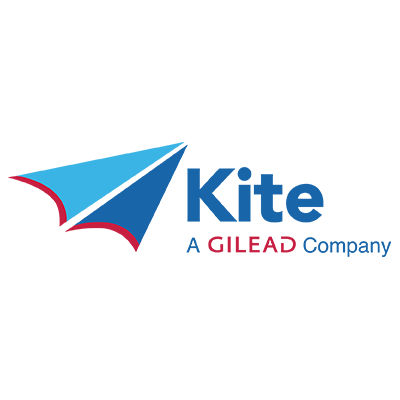预约演示
更新于:2025-10-05
Kite Pharma EU BV
更新于:2025-10-05
概览
标签
免疫系统疾病
血液及淋巴系统疾病
肿瘤
自体CAR-T
外泌体药物
疾病领域得分
一眼洞穿机构专注的疾病领域
暂无数据
技术平台
公司药物应用最多的技术
暂无数据
靶点
公司最常开发的靶点
暂无数据
| 排名前五的药物类型 | 数量 |
|---|---|
| 外泌体药物 | 4 |
| 自体CAR-T | 2 |
| 排名前五的靶点 | 数量 |
|---|---|
| CD19(B淋巴细胞抗原CD19) | 2 |
关联
6
项与 Kite Pharma EU BV 相关的药物靶点 |
作用机制 CD19调节剂 |
在研适应症 |
最高研发阶段批准上市 |
首次获批国家/地区 美国 |
首次获批日期2020-07-24 |
靶点 |
作用机制 CD19调节剂 |
在研机构 |
在研适应症 |
最高研发阶段批准上市 |
首次获批国家/地区 美国 |
首次获批日期2017-10-18 |
靶点- |
作用机制- |
在研适应症 |
非在研适应症- |
最高研发阶段临床前 |
首次获批国家/地区- |
首次获批日期- |
100 项与 Kite Pharma EU BV 相关的临床结果
登录后查看更多信息
0 项与 Kite Pharma EU BV 相关的专利(医药)
登录后查看更多信息
1
项与 Kite Pharma EU BV 相关的文献(医药)2022-08-01·Cytotherapy
Recommendations for procurement of starting materials by apheresis for advanced therapy medicinal products
Article
作者: Watson, Douglas ; Fong, Chris ; Reeks, Dominic ; Smith, Richard ; Angelica, Rita ; Manson, Lynn ; Kerr, Maria ; Barry, Jacqueline ; Guest, Julie ; Potok, Davina ; Francis, Natalie ; Sinclair, Joy ; Chuku, Justina ; Turner, Marc ; Cui, Haili ; Sweeny, Di ; Bell, Neil ; Piccinini, Elia ; Keane, Helen ; Shingleton, William ; Hope, Drew ; Shingler, William ; Armstrong, Jennifer
Activities involved in the production of certain advanced therapy medicinal products (ATMPs) require standardized approaches to mononuclear cell procurement to ensure the highest product quality, safety and process efficiency. These aims must be achieved while meeting regulatory and accreditation requirements for the procurement of mononuclear cells as starting materials. Mononuclear cells constitute the starting materials for many ATMPs, and this article sets out recommendations for procurement by clinical apheresis, addressing the variation among existing working practices and different manufacturers' requirements that currently poses a challenge when managing multiple different protocols.
1
项与 Kite Pharma EU BV 相关的新闻(医药)2022-11-30
Cell therapy has broken new therapeutic ground, but the progress of this drug class in blood cancers has yet to be realized in solid tumors. Big pharmaceutical companies and upstart biotechs are trying various approaches to broaden the scope of these cancer treatments and AstraZeneca is now joining them by buying a startup with technology for developing a new type of personalized cell therapy.
AstraZeneca said Tuesday it has agreed to pay $200 million up front to acquire Neogene Therapeutics, a company that earlier this year received the regulatory green light to begin the first human test of its cell therapy. Another $120 million is tied to the achievement of milestones. The companies expect to close the deal in the first quarter of 2023.
The first cell therapies were made by harvesting a patient’s own T cells and engineering them in a lab to address a target on cancer cells. The cell therapies of Neogene are also highly personalized. The biotech takes a patient’s T cells and engineers them to target neoantigens, novel targets found exclusively on cancer cells due to cancer-associated DNA mutations. Whereas the first generation of cell therapies go after targets on the tumor surface, Neogene, which maintains operations in Amsterdam and Santa Monica, California, claims its T cell receptor-therapies (TCR-Ts) can recognize targets inside a tumor. By addressing previously inaccessible targets, Neogene says its cell therapies can address solid tumors.
A Neogene TCR-T starts with a biopsy of a patient’s tumor. DNA sequencing along with other genomics tools are used to identify the neoantigens of a tumor as well as the genes that code for their receptors. Those genes are introduced into a patient’s T cells, enabling them to recognize a patient’s tumors. But rather than addressing a single target, a Neogene TCR-T will span multiple tumor neoantigens to spark a broader T cell response against the cancer. In a prepared statement, Susan Galbraith, AstraZeneca’s executive vice president of oncology R&D, said the Neogene’s capability to discover TCRs complements the cell therapy capability it has built over the last three years.
Neogene’s founders have deep cell therapy experience. The company was founded in 2018 by Ton Schumacher and Carsten Linneman. The duo had previously founded T-Cell Factory, a company that developed technology that discovers tumor-specific T cell receptors. Kite Pharma acquired T-Cell Factory in 2015. Kite’s Yescarta became the second CAR T cell therapy to win FDA approval in 2017, the same year that Gilead Sciences struck an $11.9 billion deal to acquire Kite. Neogene has Kite connections. The startup’s investors include Kite founder and former CEO Arie Belldegrun; David Chang, another former Kite executive, is also a Neogene investor. Neogene disclosed more details about pedigree and its technology in 2020, when it unveiled a $110 million Series A round of financing. At that time, Linneman told me he estimated clinical testing was two years away.
AstraZeneca’s deal to acquire Neogene comes as the biotech moves its research into clinical testing with its lead program, NT-125. This cell therapy is designed to carry up to five neoantigen-specific TCRs, reducing the opportunity for a tumor to develop mutations that enable it to escape the treatment. Dutch authorities cleared Neogene’s application to begin a Phase 1 test in May. That study, which will be done in partnership with the Netherlands Cancer Institute, is designed to enroll adults with various types of solid tumors.
The broader field of TCR therapies is making progress and growing. Adaptimmune’s work in TCRs has led to alliances with GSK, Astellas, and Roche. In August, startup 3T Biosciences emerged with $40 million and technology licensed from Stanford that screens for TCRs that are specific to cancer cells. South San Francisco-based 3T aims to reach the clinic by 2024.

并购
100 项与 Kite Pharma EU BV 相关的药物交易
登录后查看更多信息
100 项与 Kite Pharma EU BV 相关的转化医学
登录后查看更多信息
组织架构
使用我们的机构树数据加速您的研究。
登录
或

管线布局
2025年12月25日管线快照
管线布局中药物为当前组织机构及其子机构作为药物机构进行统计,早期临床1期并入临床1期,临床1/2期并入临床2期,临床2/3期并入临床3期
临床前
4
2
批准上市
登录后查看更多信息
当前项目
| 药物(靶点) | 适应症 | 全球最高研发状态 |
|---|---|---|
阿基仑赛 ( CD19 ) | 弥漫性大B细胞淋巴瘤 更多 | 批准上市 |
布瑞基奥仑赛 ( CD19 ) | 复发性套细胞淋巴瘤 更多 | 批准上市 |
CF-MEV-132 | 支气管肺发育不良 更多 | 临床前 |
CF-MEV-126 | 脑卒中 更多 | 临床前 |
CF-MEV-117 | 耐药性癫痫 更多 | 临床前 |
登录后查看更多信息
药物交易
使用我们的药物交易数据加速您的研究。
登录
或

转化医学
使用我们的转化医学数据加速您的研究。
登录
或

营收
使用 Synapse 探索超过 36 万个组织的财务状况。
登录
或

科研基金(NIH)
访问超过 200 万项资助和基金信息,以提升您的研究之旅。
登录
或

投资
深入了解从初创企业到成熟企业的最新公司投资动态。
登录
或

融资
发掘融资趋势以验证和推进您的投资机会。
登录
或

生物医药百科问答
全新生物医药AI Agent 覆盖科研全链路,让突破性发现快人一步
立即开始免费试用!
智慧芽新药情报库是智慧芽专为生命科学人士构建的基于AI的创新药情报平台,助您全方位提升您的研发与决策效率。
立即开始数据试用!
智慧芽新药库数据也通过智慧芽数据服务平台,以API或者数据包形式对外开放,助您更加充分利用智慧芽新药情报信息。
生物序列数据库
生物药研发创新
免费使用
化学结构数据库
小分子化药研发创新
免费使用

